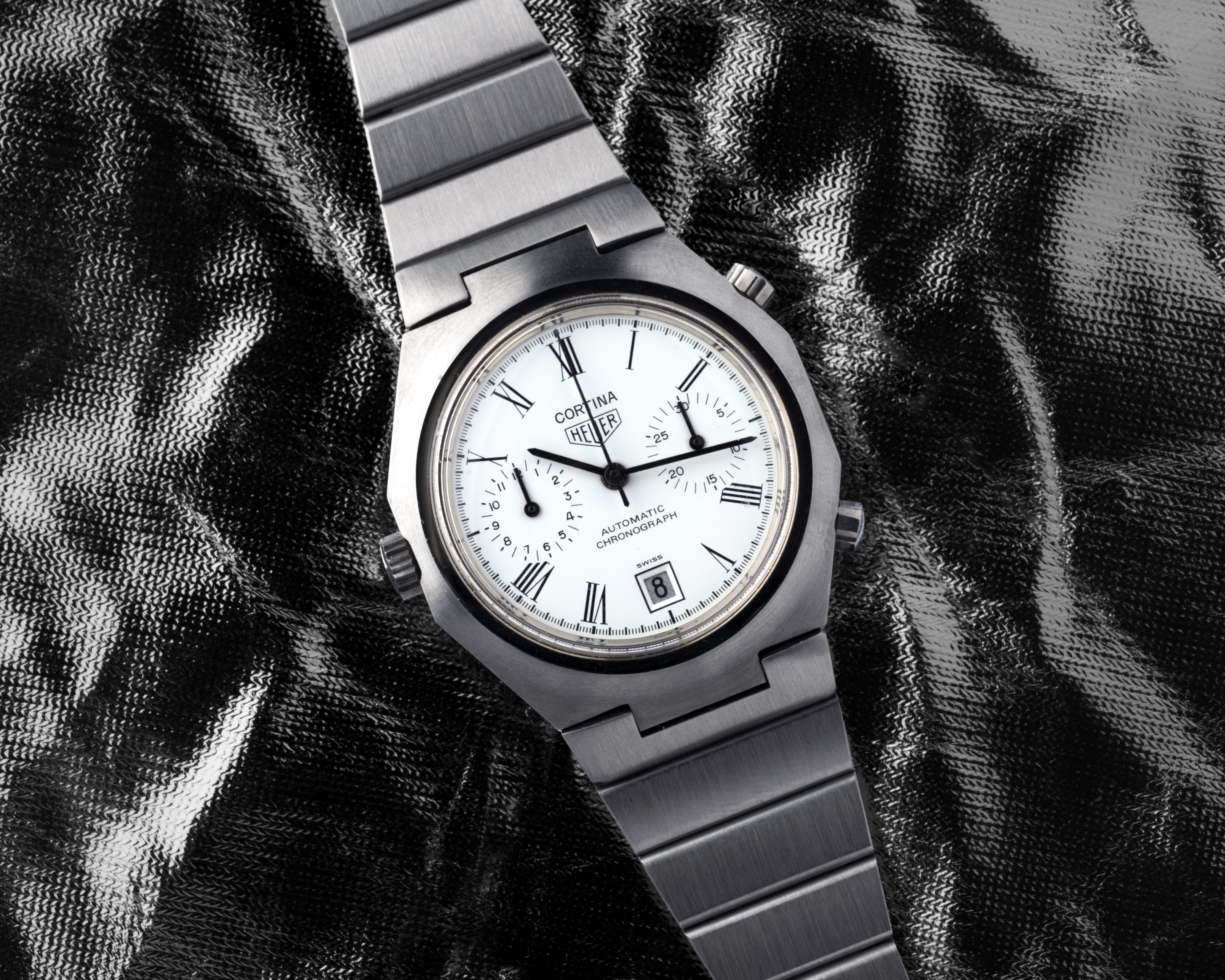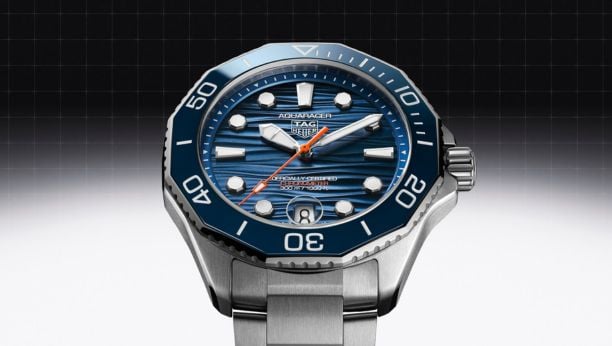VINTAGE COLLECTION
HEUER CORTINA
The Cortina was one of the most distinctive models ever produced by Heuer, with the unique shape and finish of the Calibre 12 case, its integrated bracelet, the white enamel dial (featuring black Roman numerals), or the brilliant Cotes de Geneve finish on the bright blue model produced in the 1980s. Each of the three models embodied a different approach to elegance and was produced for a relatively short period of time, so that they are rare and coveted by today’s collectors.
As described in our introduction to the Jarama model, Heuer launched the third generation of Caliber 12 chronographs in 1977, with these models dialing back the exuberant, over-the-top style of the early 1970s, to create models that combined the sporty look of a chronograph with an elegance that was suitable for any occasion. With their refined styles, the Cortina and Verona models -- both named for romantic Italian destinations – capture the essence of this third generation, but in very different ways. The Verona has the style of a traditional chronograph, with a round case, curved lugs, and a leather strap, while the Cortina captured an emerging style of the 1970s, with an eight-sided stainless steel case mounted to an integrated bracelet.
HISTORY
The Cortina is named after the Italian mountain town of the same name, where the rich and famous would go skiing every year. In 1977, Heuer was keen to add a winter-sports model to its portfolio, and so it made sense to name this new model after the chic Italian resort.

DESIGN
The Cortina chronograph boasted several design features that distinguished it from other Heuer models of the day. The 39 millimeter case is the key feature of the Cortina design, being eight-sided (an octagon), whereas the cases of most other Heuer chronographs of the 1970s were either round, oblong or at least had rounded corners. The top surface of the case has a brushed finish, in a concentric pattern around the dial, whereas the brushing on most other Heuer cases followed a radial pattern. This contrasts with the brightly polished sides of the case.
The second design signature of the Cortina is the integrated stainless steel bracelet that seems to merge into the case itself. The bracelet also has a brushed finish on the top surface of the solid links.
HEUER CORTINA - BLACK DIAL
The black version of the Cortina (reference 110.233N) uses matte black paint, with the registers matching the dial. The markers are painted luminous strips, and the bright white hands follow the style of some earlier models (for example, the Silverstone). The watch is a study in minimalism, with few decorative elements, beyond the case and bracelet themselves.
HEUER CORTINA – WHITE DIAL
If we were to line up all the Calibre 12 chronographs that Heuer produced from 1969 into the mid-1980s and ask, “Which one is different from all the others?”, the white version of the Cortina (reference 110.233R) would win the prize. This bright white dial is enamel, with Roman numerals for the hour markers, all these elements being unique to the Cortina. The hour and minute hands, as well as the chronograph hands, are painted a glossy black.
HEUER CORTINA – BLUE DIAL
After an investor group that included Nouvelle Lemania purchased Heuer in 1982, the company re-issued two of the Calibre 12 chronographs from the 1970s – the Silverstone and the Cortina -- using Lemania 5100 series movements. While the case of the Lemania powered Cortina (reference 510.513) has a very different geometry from the earlier model, the elegant style of the Cortina continued. The bright blue Cotes de Geneve dial is unique to this model, and collectors rank it as among the most beautiful ever used for a Heuer chronograph.
As with the Lemania 5100 version of the Silverstone, the model name “Cortina” was deleted on some later models.







